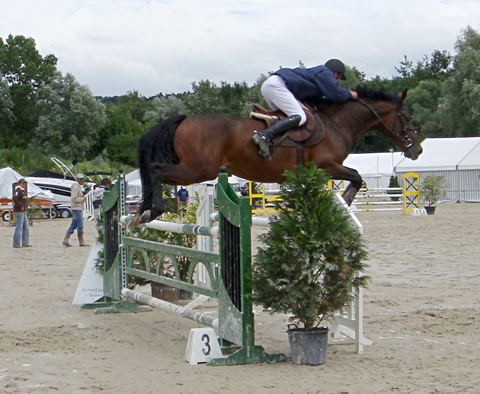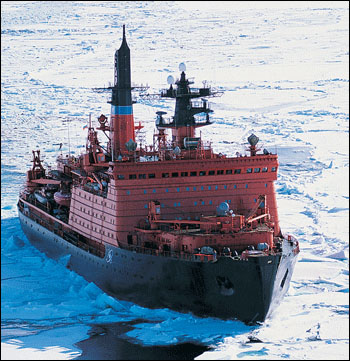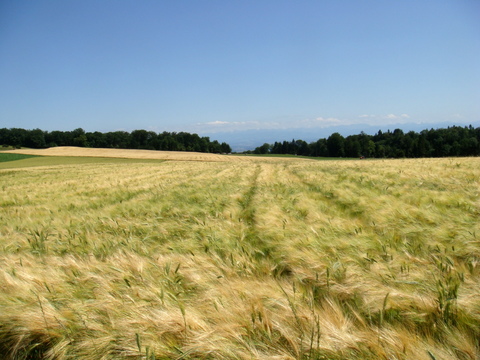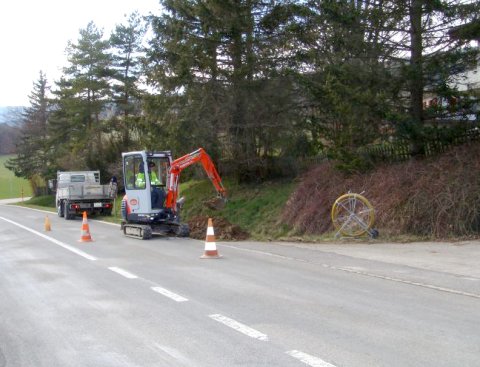« June 2008 | Main | August 2008 »
Friday, July 18, 2008
Flying Horse

Click image for an enlargement
Thursday, July 17, 2008
Nuclear Ninety North: Fourmilab Unattended 2008-07-19 to 2008-08-06
I'll be away from Fourmilab and deprived of Internet connectivity for reasons of latitude from July 19th through August 6th, 2008. I'm going to the North Pole—no, really! Fourmilab's third “Holiday in Hell” solar eclipse expedition (the first two: Iran 1999, Zambia 2001) will set sail (or, more precisely, split nuclei) as we depart Murmansk for the North Pole, then turn around and head south to observe (cloud cover permitting) the total Solar Eclipse of August 1st, 2008 from Novaya Zemlya, where on October 30th, 1961 Tsar Bomba was exploded with a yield of 50 megatons of TNT.
Wednesday, July 16, 2008
Reading List: World War IV
- Podhoretz, Norman. World War IV. New York: Doubleday, 2007. ISBN 978-0-385-52221-2.
- Whether you agree with it or not, here is one of the clearest expositions of the “neoconservative” (a term the author, who is one of the type specimens, proudly uses to identify himself) case for the present conflict between Western civilisation and the forces of what he identifies as “Islamofascism”, an aggressive, expansionist, and totalitarian ideology which is entirely distinct from Islam, the religion. The author considers the Cold War to have been World War III, and hence the present and likely as protracted a conflict, as World War IV. He deems it to be as existential a struggle for civilisation against the forces of tyranny as any of the previous three wars. If you're sceptical of such claims (as am I, being very much an economic determinist who finds it difficult to believe a region of the world whose exports, apart from natural resources discovered and extracted largely by foreigners, are less than those of Finland, can truly threaten the fountainhead of the technologies and products without which its residents would remain in the seventh century utopia they seem to idolise), read Chapter Two for the contrary view: it is argued that since 1970, a series of increasingly provocative attacks were made against the West, not in response to Western actions but due to unreconcilably different world-views. Each indication of weakness by the West only emboldened the aggressors and escalated the scale of subsequent attacks. The author argues the West is engaged in a multi-decade conflict with its own survival at stake, in which the wars in Afghanistan and Iraq are simply campaigns. This war, like the Cold War, will be fought on many levels: not just military, but also proxy conflicts, propaganda, covert action, economic warfare, and promotion of the Western model as the solution to the problems of states imperiled by Islamofascism. There is some discussion in the epilogue of the risk posed to Europe by the radicalisation of its own burgeoning Muslim population while its indigenes are in a demographic death spiral, but for the most part the focus is on democratising the Middle East, not the creeping threat to democracy in the West by an unassimilated militant immigrant population which a feckless, cringing political class is unwilling to confront. This book is well written and argued, but colour me unpersuaded. Instead of spending decades spilling blood and squandering fortune in a region of the world which has been trouble for every empire foolish enough to try to subdue it over the last twenty centuries, why not develop domestic energy sources to render the slimy black stuff in the ground there impotent and obsolete, secure the borders against immigration from there (except those candidates who demonstrate themselves willing to assimilate to the culture of the West), and build a wall around the place and ignore what happens inside? Works for me.
Tuesday, July 15, 2008
Trompe-l'oeil

Click image for an enlargement.
Monday, July 14, 2008
Reading List: Backyard Ballistics
- Gurstelle, William. Backyard Ballistics. Chicago: Chicago Review Press, 2001. ISBN 978-1-55652-375-5
- Responsible adults who have a compelling need to launch potatoes 200 metres downrange at high velocity, turn common paper matches into solid rockets, fire tennis balls high into the sky with duct taped together potato chip cans (potatoes again!) and a few drops of lighter fluid, launch water balloons against the aggressor with nothing more than surgical tubing and a little muscle power, engender UFO reports with shimmering dry cleaner bag hot air balloons, and more, will find the detailed instructions they need for such diversions in this book. As in his subsequent Whoosh Boom Splat (December 2007), the author provides detailed directions for fabricating these engines of entertainment from, in most cases, PVC pipe, and the scientific background for each device and suggestions for further study by the intrepid investigator who combines the curiosity of the intuitive experimentalist with the native fascination of the third chimpanzee for things that go flash and bang. If you live in Southern California, I'd counsel putting the Cincinnati Fire Kite and Dry Cleaner Bag Balloon experiments on hold until after the next big rain.
Saturday, July 12, 2008
Reading List: The Electric Life of Michael Faraday
- Hirshfeld, Alan. The Electric Life of Michael Faraday. New York: Walker and Company, 2006. ISBN 978-0-8027-1470-1.
- Of post-Enlightenment societies, one of the most rigidly structured by class and tradition was that of Great Britain. Those aspiring to the life of the mind were overwhelmingly the well-born, educated in the classics at Oxford or Cambridge, with the wealth and leisure to pursue their interests on their own. The career of Michael Faraday stands as a monument to what can be accomplished, even in such a stultifying system, by the pure power of intellect, dogged persistence, relentless rationality, humility, endless fascination with the intricacies of creation, and confidence that it was ultimately knowable through clever investigation. Faraday was born in 1791, the third child of a blacksmith who had migrated to London earlier that year in search of better prospects, which he never found due to fragile health. In his childhood, Faraday's family occasionally got along only thanks to the charity of members of the fundamentalist church to which they belonged. At age 14, Faraday was apprenticed to a French émigré bookbinder, setting himself on the path to a tradesman's career. But Faraday, while almost entirely unschooled, knew how to read, and read he did—as many of the books which passed through the binder's shop as he could manage. As with many who read widely, Faraday eventually came across a book that changed his life, The Improvement of the Mind by Isaac Watts, and from the pragmatic and inspirational advice in that volume, along with the experimental approach to science he learned from Jane Marcet's Conversations in Chemistry, Faraday developed his own philosophy of scientific investigation and began to do his own experiments with humble apparatus in the bookbinder's shop. Faraday seemed to be on a trajectory which would frustrate his curiosity forever amongst the hammers, glue, and stitches of bookbindery when, thanks to his assiduous note-taking at science lectures, his employer passing on his notes, and a providential vacancy, he found himself hired as the assistant to the eminent Humphry Davy at the Royal Institution in London. Learning chemistry and the emerging field of electrochemistry at the side of the master, he developed the empirical experimental approach which would inform all of his subsequent work. Faraday originally existed very much in Davy's shadow, even serving as his personal valet as well as scientific assistant on an extended tour of the Continent, but slowly (and over Davy's opposition) rose to become a Fellow of the Royal Institution and director of its laboratory. Seeking to shore up the shaky finances of the Institution, in 1827 he launched the Friday Evening Discourses, public lectures on a multitude of scientific topics by Faraday and other eminent scientists, which he would continue to supervise until 1862. Although trained as a chemist, and having made his reputation in that field, his electrochemical investigations with Davy had planted in his mind the idea that electricity was not a curious phenomenon demonstrated in public lectures involving mysterious “fluids”, but an essential component in understanding the behaviour of matter. In 1831, he turned his methodical experimental attention to the relationship between electricity and magnetism, and within months had discovered electromagnetic induction: that an electric current was induced in a conductor only by a changing magnetic field: the principle used by every electrical generator and transformer in use today. He built the first dynamo, using a spinning copper disc between the poles of a strong magnet, and thereby demonstrated the conversion of mechanical energy into electricity for the first time. Faraday's methodical, indefatigable investigations, failures along with successes, were chronicled in a series of papers eventually collected into the volume Experimental Researches in Electricity, which is considered to be one of the best narratives ever written of science as it is done. Knowing little mathematics, Faraday expressed the concepts he discovered in elegant prose. His philosophy of science presaged that of Karl Popper and the positivists of the next century—he considered all theories as tentative, advocated continued testing of existing theories in an effort to falsify them and thereby discover new science beyond them, and he had no use whatsoever for the unobservable: he detested concepts such as “action at a distance”, which he considered mystical obfuscation. If some action occurred, there must be some physical mechanism which causes it, and this led him to formulate what we would now call field theory: that physical lines of force extend from electrically charged objects and magnets through apparently empty space, and it is the interaction of objects with these lines of force which produces the various effects he had investigated. This flew in the face of the scientific consensus of the time, and while universally admired for his experimental prowess, many regarded Faraday's wordy arguments as verging on the work of a crank. It wasn't until 1857 that the ageing Faraday made the acquaintance of the young James Clerk Maxwell, who had sent him a copy of a paper in which Maxwell made his first attempt to express Faraday's lines of force in rigorous mathematical form. By 1864 Maxwell had refined his model into his monumental field theory, which demonstrated that light was simply a manifestation of the electromagnetic field, something that Faraday had long suspected (he wrote repeatedly of “ray-vibrations”) but had been unable to prove. The publication of Maxwell's theory marked a great inflection point between the old physics of Faraday and the new, emerging, highly mathematical style of Maxwell and his successors. While discovering the mechanism through experiment was everything to Faraday, correctly describing the behaviour and correctly predicting the outcome of experiments with a set of equations was all that mattered in the new style, which made no effort to explain why the equations worked. As Heinrich Hertz said, “Maxwell's theory is Maxwell's equations” (p. 190). Michael Faraday lived in an era in which a humble-born person with no formal education or knowledge of advanced mathematics could, purely through intelligence, assiduous self-study, clever and tireless experimentation with simple apparatus he made with his own hands, make fundamental discoveries about the universe and rise to the top rank of scientists. Those days are now forever gone, and while we now know vastly more than those of Faraday's time, one also feels we've lost something. Aldous Huxley once remarked, “Even if I could be Shakespeare, I think I should still choose to be Faraday.” This book is an excellent way to appreciate how science felt when it was all new and mysterious, acquaint yourself with one of the most admirable characters in its history, and understand why Huxley felt as he did.
Thursday, July 10, 2008
Obama's America
I've written before here and here about the impact on the politics of the United States as the “millennial generation”—those born between 1980 and 2000—enter the public arena. The stunning rise of Barack Obama to be the presumptive nominee of the Democratic Party may be seen as the first decisive consequence of the coming millennial domination of politics there. Certainly the demographics of Obama's supporters is strongly tilted toward the young. The Obama campaign has been long on style and inspiration and short on specific policy prescriptions, and recently has veered toward the centre on a number of points which were strongly defended during the primary campaign. There has been relatively little outrage among Obama's vehement supporters at these apparent sell-outs, largely, I suspect, because they believe that this running toward the centre is essential to win in the general election, and that once elected, Obama will govern as the hard left ideologue they believe (or at least hope) him to be. It has seemed to me for some time that 2008, the fortieth anniversary of 1968, when the radical wave last peaked and broke, is seen by the aging radicals of the Sixties and their intellectual heirs as the one great chance remaining in their lifetimes to enact radical, transformative change in the U.S., and Barack Obama, a radical by instinct, whose eloquence and thin paper trail allows him to gain the support of centrists who would be repelled were his actual agenda known to them, the vehicle to achieve that change. If my gut instinct about Obama is correct, and he does manage to win election, along with a Democratic majority in the House and a filibuster-proof majority in the Senate, the U.S. will be poised for its sharpest veer to the Left since the New Deal, and perhaps in its history. What will the consequences of this be? Well, nobody knows, but that doesn't deter folks like me (who, unlike the millennials, remember the 1960s and 1970s) from making predictions. So here, in the spirit of Harry Shultz's New Year predictions, are my prognostications for the U.S. and world scene at the end of the first Obama administration. Now, some of these are tongue in cheek (although I suspect readers may differ in their estimation of which), but they all follow from my expectations of how Obama and a unified Democratic majority will govern. Some readers may consider a majority of these items as progress, while others will deem them pernicious. All I'm trying to do here is forecast objective events.- Top federal marginal tax rate (including Social Security, which will have no cap) 55% or higher. Social Security benefits will remain capped at benefits equal to ≅ $100,000/year income.
- Top Federal estate tax rate 55% with an exclusion of $1 million.
- Universal federal-supervised health care with HHS mandated payments for procedures. Effective rationing of access to expensive procedures begins. Medical tourism to Eastern Europe and Asia comes onto the media radar.
- Mandatory community service for all high school and college students. Federal education aid contingent upon certification of student compliance. Activist groups mobilise to provide turnkey service packages to schools, providing them an opportunity to indoctrinate students and use their labour to further their own agendas.
- Departure tax and mark-to-market exit fee to deter the increasing number of high-income productive citizens planning to emigrate and relinquish their citizenship.
- US dollar trades at 0.50 Euro or lower. OPEC prices crude oil in Euros.
- Dow Jones Industrials close below 6000 for the first time since 1996.
- Russian ships land a “weather station” on an uninhabited island of the Aleutian chain and continue to resupply its four person scientific staff, engaged in “global warming research”. The U.S. protests, and Russia produces documents supporting a claim the island was not transferred as part of the Alaska Purchase. The U.S. takes the question to the United Nations, where it remains unresolved. The Russian station, landed in the first three months of the Obama administration, remains in place.
- The “fairness doctrine” is re-imposed on all broadcasters, including those delivering their content to an audience greater than a specified size on the Internet. The market for conservative talk radio shrinks as affiliates see their revenues fall when forced to carry equal hours of unprofitable liberal programming.
- Under the guise of “network neutrality” the Federal Communications Commission is empowered to regulate transmissions over the Internet with powers comparable to those of the Communications Act of 1934. Using Digital Imprimatur technologies, Internet anonymity begins to erode. Peer to peer Internet traffic is suppressed: only FCC licensed “Internet Transmitter Sites” are allowed to deliver packets through U.S. switches, and only in the clear, except for sites explicitly licensed to use encryption.
- Hate speech legislation leads to the establishment of administrative law human rights tribunals with broad powers to impose penalties for speech, print, or Internet publication.
- Federal minimum wage raised to $8.25/hour with automatic indexing to the Consumer Price Index to begin in 2012.
- Public financing of Senate and House campaigns is enacted, with stringent regulation of “in-kind” expenditures, including promotion by independent Internet advocates including bloggers, who are required to report all mentions of candidates for Federal office, along with their total readership, page access statistics, and advertising revenue received and its sources.
- Full year inflation rate (as measured by the Consumer Price Index) for 2012 is 11.5%.
- Pursuant to the Obesity Reduction Act, the Food and Drug Administration is granted regulatory power over the menus of fast food restaurants.
- Fast-track illegal immigrant amnesty leads to issuance of green cards to 9 million illegals, with 2.5 million obtaining citizenship. Illegal immigration remains at 2008 levels. “Honk if you were born here” bumper stickers begin to appear on pickup trucks in the heartland.
- U.S. unemployment rate is 8.75% at the end of 2012.
- Development of ballistic missile defence, including the Airborne Laser is cancelled, and existing interceptors in Alaska are stood down.
- Corporate Average Fuel Economy standards for vehicles sold in the U.S. are raised to 35 mpg for the 2012 model year, with a planned rise to 45 mpg by 2020. General Motors files for Chapter 11 reorganisation.
- Three U.S. embassies on three continents bombed within ten seconds of one another with a loss of 972 lives, including 72 U.S. citizens. The FBI continues to investigate the incident and attempts to identify the perpetrators.
- Average price of gasoline is $9.75 per gallon. No new domestic oil or gas exploration or production has been authorised, nor has a single nuclear power station been licensed. Wind turbines surround the Capital Beltway to exploit the gales of hot air issuing from within.
- Following the U.S. troop withdrawal, violence flares once again in Iraq and then stability is restored as the successor government, an Iranian client state, brutally puts down Kurd and Sunni resistance with assistance from Iran. Access by Western media to Kurd and Sunni regions is denied, and despite rumours of atrocities, Iraq largely disappears from legacy media attention.
- Iran conducts three underground tests of nuclear devices, the last a 40 kiloton tritium-boosted weaponised design compatible with the uprated Shahab-3 missile. Iran taunts the West by placing the detailed weapon and missile designs on the Internet. Internet traffic monitoring shows a large number of downloads from Saudi Arabia and Egypt.
- The Federal Firearms Liability Act provides for unlimited strict liability for manufacturers, sellers, and resellers of firearms and ammunition used by private citizens in actions brought by those damaged directly or indirectly by their use. Several test cases await certiorari by the Supreme Court, but with the new 7–2 liberal majority, most observers expect the act to be upheld.
- Over a period of three weeks, all of the submarine fibre optic cables to Taiwan fail. The Taiwanese government blames the People's Republic, which denies any involvement, suggesting that “rogue fish” are to blame. The U.S. State Department requests the United Nations to investigate. Two years later, the composition of the committee is almost agreed upon.
- “Carbon surcharge” is enacted on all products whose production, use, or consumption release CO2 into the atmosphere. Users of electricity generated from coal purchase “offsets” which funnel money into the pockets of politicians who license Beltway wind farms.
Wednesday, July 9, 2008
Amber Waves of Grain, Purple Mountain Majesties

Click image for an enlargement.
Friday, July 4, 2008
Reading List: Shakespeare
- Bryson, Bill. Shakespeare. London: Harper Perennial, 2007. ISBN 978-0-00-719790-3.
- This small, thin (200 page) book contains just about every fact known for certain about the life of William Shakespeare, which isn't very much. In fact, if the book restricted itself only to those facts, and excluded descriptions of Elizabethan and Jacobean England, Shakespeare's contemporaries, actors and theatres of the time, and the many speculations about Shakespeare and the deliciously eccentric characters who sometimes promoted them, it would probably be a quarter of its present length. For a figure whose preeminence in English literature is rarely questioned today, and whose work shaped the English language itself—2035 English words appear for the first time in the works of Shakespeare, of which about 800 continue in common use today, including critical, frugal, horrid, vast, excellent, lonely, leapfrog, and zany (pp. 112–113)—very little is known apart from the content of his surviving work. We know the dates of his birth, marriage, and death, something of his parents, siblings, wife, and children, but nothing of his early life, education, travel, reading, or any of the other potential sources of the extraordinary knowledge and insight into the human psyche which informs his work. Between the years 1585 and 1592 he drops entirely from sight: no confirmed historical record has been found, then suddenly he pops up in London, at the peak of his powers, writing, producing, and performing in plays and quickly gaining recognition as one of the preeminent dramatists of his time. We don't even know (although there is no shortage of speculation) which plays were his early works and which were later: there is no documentary evidence for the dates of the plays nor the order in which they were written, apart from a few contemporary references which allow placing a play as no later than the mention of it. We don't even know how he spelt or pronounced his name: of six extant signatures believed to be in his hand, no two spell his name the same way, and none uses the “Shakespeare” spelling in use today. Shakespeare's plays brought him fame and a substantial fortune during his life, but plays were regarded as ephemeral things at the time, and were the property of the theatrical company which commissioned them, not the author, so no authoritative editions of the plays were published during his life. Had it not been for the efforts of his colleagues John Heminges and Henry Condell, who published the “First Folio” edition of his collected works seven years after his death, it is probable that the eighteen plays which first appeared in print in that edition would have been lost to history, with subsequent generations deeming Shakespeare, based upon surviving quarto editions of uneven (and sometimes laughable) quality of a few plays, one of a number of Elizabethan playwrights but not the towering singular figure he is now considered to be. (One wonders if there were others of Shakespeare's stature who were not as lucky in the dedication of their friends, of whose work we shall never know.) Nobody really knows how many copies of the First Folio were printed, but guesses run between 750 and 1000. Around 300 copies in various states of completeness have survived to the present, and around eighty copies are in a single room at the Folger Shakespeare Library in Washington, D.C., about two blocks from the U.S. Capitol. Now maybe decades of computer disasters have made me obsessively preoccupied with backup and geographical redundancy, but that just makes me shudder. Is there anybody there who wonders whether this is really a good idea? After all, the last time I was a few blocks from the U.S. Capitol, I spotted an ACME MISSILE BOMB right in plain sight! A final chapter is devoted to theories that someone other than the scantily documented William Shakespeare wrote the works attributed to him. The author points out the historical inconsistencies and implausibilities of most frequently proffered claimants, and has a good deal of fun with some of the odder of the theorists, including the exquisitely named J. Thomas Looney, Sherwood E. Silliman, and George M. Battey. Bill Bryson fans who have come to cherish his lighthearted tone and quirky digressions on curious details and personalities from such works as A Short History of Nearly Everything (November 2007) will not be disappointed. If one leaves the book not knowing a great deal about Shakespeare, because so little is actually known, it is with a rich sense of having been immersed in the England of his time and the golden age of theatre to which he so mightily contributed. A U.S. edition is available, but at this writing only in hardcover.
Wednesday, July 2, 2008
Digging Up the Street: Fourmilab Fast Fibre

Click image for “digging up the street” gallery.
Any folks out there with really fast Internet connections who want to see how the new fast fibre Fourmilab actually performs are invited to try a command-line FTP download of the 17 megabyte binary file with URL:
Update: There appears to have been a configuration problem in the upstream connection to the backbone which was resolved around 10:00 UTC on 2008-07-03. After the fix I downloaded a 1.2 Gb video file from CERN at a mean transfer rate of 2.01 megabytes per second (as reported by Wget). This is an after-overhead sustained bit rate of about 16 Mbit/sec, so it appears that the connection is now running at 20 Mbit/sec end to end. (2008-07-03 11:27 UTC)
Update: A very nice, free, and extremely stylish bandwidth test is available at Speedtest.net. Using it to test with servers in Geneva and Basel confirms that Fourmilab's Internet connectivity is now running at 20 Mbit/sec bidirectional. Thanks to those who sent bandwidth measurements; there isn't a need for any more. (2008-07-03 17:29 UTC)
ftp://ftp.fourmilab.ch/pub/hotbits/statistical_testing/FourmilabHotBits_NIST_SP_800-22.zipPlease let me know, via the feedback button, what mean transfer rate you obtained. Thanks in advance!